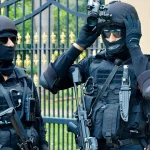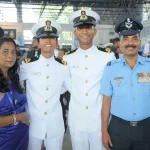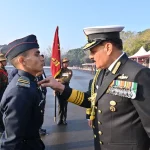To embark on the journey of joining the Rashtriya Rifles (RR), a prestigious component of the Indian Army specializing in counter-insurgency operations, understanding the pathway is crucial. The RR, established in 1990, primarily aims to combat militancy in Jammu and Kashmir, and it represents a blend of combat proficiency, tactical acumen, and cultural understanding. This elite force is renowned for its operational significance, and service within it is considered a prestigious achievement. However, joining the RR isn’t straightforward; it requires candidates to first enlist in the Indian Army, either as a soldier or an officer, before undergoing specialized training to prepare for the unique challenges of deployment within the RR.
This comprehensive guide will walk you through the complexities of joining the Rashtriya Rifles, ensuring you receive the information needed to navigate this demanding route successfully.
Historical Context
The Rashtriya Rifles were formed during a critical juncture in Indian history—the rise of militancy in Jammu and Kashmir during the late 1980s. Recognizing the urgent need for a specialized force to manage the growing insurgency threat, the Indian Army conceptualized the RR to utilize soldiers from various infantry regiments for counter-insurgency operations. This operational flexibility and focus on specialized intelligence-driven warfare has made the RR a cornerstone of India’s security architecture in the region.
Over the years, the RR has earned a reputation for its effectiveness in responding to complex security scenarios, often operating in challenging geographical terrains. It leverages the diverse backgrounds and skills of its personnel, ensuring a well-rounded approach to operations. As a result, postings in the RR not only promise substantial responsibility but also provide a crucial stepping stone in an officer’s or soldier’s career trajectory in the Indian Army.
Joining the Indian Army: The First Step
To become a member of the Rashtriya Rifles, one must first join the Indian Army. The procedures differ based on whether you are aspiring to become an officer or a soldier (Jawan).
For Officers
- Examination Pathways:
- National Defence Academy (NDA): The NDA is a prestigious institution that admits candidates aged 17.5 to 23 years who have completed their 10+2 exams. Admission is based on a written examination followed by an interview conducted by the Services Selection Board (SSB).
- Combined Defence Services (CDS): For graduates aged 19-25, the CDS exam is conducted by the UPSC. Candidates who clear the exam also undergo SSB interviews.
- Technical Entry Scheme (TES): This is for those with a 10+2 qualification in Physics, Chemistry, and Mathematics, focusing on engineering pathways.
- Short Service Commission (SSC): For graduates, SSC is another entry point, with direct placements into officers’ training academies.
- Officers Training Academy (OTA): Direct entry into the OTA also exists for specific graduate streams and is known for its rigorous training regimen.
- Training Regimen:
- Candidates selected via NDA undergo three years of training at the NDA, followed by one year at the Indian Military Academy (IMA).
- Those entering via OTA undergo training lasting approximately 49 weeks before being commissioned.
For Soldiers (Jawans)
- Recruitment Process:
- Soldiers can apply through various channels for positions requiring educational qualifications ranging from 10th to 12th grade. Candidates usually fall in the age group of 17.5 to 23 years.
- The Indian Army conducts rallies across the country to facilitate recruitment, which significantly eases accessibility for aspiring candidates.
- Training:
- Upon selection, recruits undergo a foundational training course at designated training centers, which focuses on military discipline, physical fitness, and essential combat skills.
Serving in the Indian Army
Once successfully enlisted, the next vital step is to actively serve in the Indian Army, developing essential military experience and competencies.
- Gaining Experience:
- Newly inducted soldiers and officers undergo various training courses that enhance both tactical and technical expertise.
- Service is crucial for understanding military protocols and operational efficiency. Typically, personnel are expected to serve for a few years in their parent regiment before qualifying for RR deputation.
- Physical and Mental Fitness:
- Rigorous training in physical fitness is paramount. The demands of the RR require personnel to maintain exceptional fitness levels, which is honed through various Army training modules.
- Completing mandatory weapon courses and experiential learning during assignments will also enhance readiness for eventual deployment with the Rashtriya Rifles.
Deputation to Rashtriya Rifles
The process of joining the Rashtriya Rifles is characterized by its emphasis on expertise acquired through prior military service.
- Deputation Process:
- RR does not recruit directly. Instead, personnel are chosen from existing infantry regiments or other units based on their experience and performance.
- The selection criteria consider operational effectiveness, leadership capabilities, and overall contribution to the Indian Army.
- Pre-Induction Training:
- Upon selection for RR, candidates must undergo approximately four weeks of specialized pre-induction training at the Corps Battle Schools.
- This training focuses on skills relevant to counter-insurgency, urban warfare, and familiarization with combat environments in Jammu and Kashmir. It also includes crucial instruction on handling improvised explosive devices (IEDs) and navigating insurgency-stricken regions.
- Cultural and Language Training:
- Given the sensitivities associated with operations in J&K, personnel receive insights into local cultures and languages. This is pivotal in building rapport with local populations and executing successful operations.
Experience and Advantages of Serving in Rashtriya Rifles
Service in the RR is highly coveted and offers numerous benefits, making it an attractive option for many personnel.
- Valuable Experience:
- RR postings are known for the operational importance and intensity of the tasks involved. The experience gained in RR can be significantly advantageous for future postings or career advancements within the Army.
- Compensation:
- Personnel serving in the RR enjoy a salary that is approximately 25% higher than their counterparts in regular Army postings, along with associated benefits such as risk allowances and operational benefits.
- Exceptional Readiness:
- The unique nature of the work requires soldiers and officers to maintain a high state of readiness. They often operate in challenging terrains, requiring mental resilience, tactical competence, and physical fortitude.
Challenges and Potential Solutions
While the path to joining the Rashtriya Rifles is structured, it is not devoid of challenges.
- High Competition:
- Given the elite status of the RR, competition for selection during deputation can be fierce. Many candidates may face rejections based on various performance metrics.
- Solution: Focus on enhancing personal skills, participating in additional training programs, and seeking mentorship within the Army to improve prospects.
- Demanding Nature of Service:
- Life in the RR is marked by high operational stress. Deployments can take a toll on mental health and wellbeing.
- Solution: The Army provides various support mechanisms for mental health, but individuals should actively engage in self-care, maintain open communication with superiors, and utilize support structures offered.
Future Trends and Predictions
Looking ahead, the Rashtriya Rifles is likely to adapt to evolving security challenges.
- Emphasis on Technology:
- As warfare increasingly integrates technology, RR will likely focus on upskilling personnel in tech-related aspects such as drone operations and cyber warfare.
- Greater Collaboration:
- With insurgency dynamics changing, inter-agency collaboration between the RR and civil authorities could increase, enhancing operational efficiency and community engagement.
- Focus on Psychological Preparedness:
- As the psychological demands of combat operations evolve, the Army may place greater emphasis on mental resilience training for personnel prior to and during deployment.
Conclusion
Joining the Rashtriya Rifles represents a commitment not just to military service, but to the heightened responsibility of counter-insurgency operations, often under challenging conditions. By first becoming a part of the Indian Army through established pathways, candidates can pave a credible path towards this esteemed force.
Whether you’re preparing for entrance exams, honing your physical fitness, or gathering insights about life in the military, the journey to the Rashtriya Rifles is one that requires dedication, resilience, and a passion for service.
If you aspire to this challenging yet rewarding journey, start by applying for Indian Army recruitment or exploring officer entrance exams. Prepare diligently for the assessments, invest in your military training, and build the foundational skills that will ultimately empower you to serve in one of India’s most distinguished military formations. The path is undoubtedly demanding, but the rewards—a career filled with honor, discipline, and impact—are well worth the effort.












